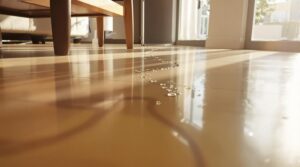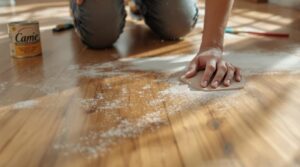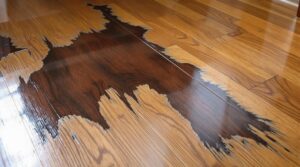Water damage beneath tile surfaces presents through multiple indicators: loose or unstable tiles from weakened adhesive, visible mold growth around grout lines, persistent staining patterns, and hollow sounds when tapped. Additional signs include discoloration, warped or buckling surfaces, and musty odors. Professional inspection with moisture detection equipment can identify concealed water damage before extensive structural compromise occurs. Understanding these warning signs enables property owners to implement timely preventive measures and necessary repairs.
Key Takeaways
- Loose or unstable tiles that feel hollow when tapped indicate water has weakened the adhesive beneath the surface.
- Dark stains, discoloration patterns, or visible mold growth around grout lines suggest trapped moisture underneath.
- Cracking or deteriorating grout lines, especially in high-moisture areas, signal potential water infiltration issues.
- Musty odors combined with visible warping or buckling of tiles point to serious water damage problems.
- Tiles that become increasingly unlevel or uneven suggest water damage is affecting the subflooring structure.
Common Visual Indicators of Water-Damaged Tiles
Water damage beneath tile surfaces manifests through several distinct visual indicators that property owners and inspectors can identify. During a tile inspection, key signs include loose or unstable tiles caused by weakened adhesive, visible mold growth particularly around grout lines, and persistent staining or discoloration patterns. Preventive measures like regular grout sealing can significantly reduce the risk of water infiltration.
A thorough moisture assessment often reveals structural changes, such as hollow sounds when tiles are tapped, warping of the subflooring, and uneven surfaces.
Green or black spots along grout lines, accompanied by musty odors, indicate active mold growth, which can develop within 48 hours of water exposure. New stains, especially those appearing after leaks or spills, and discoloration around fixtures warrant immediate attention.
The presence of one compromised tile typically suggests adjacent tiles may also be affected, necessitating detailed evaluation of the surrounding area.
What's Causing Water to Seep Under Your Tiles
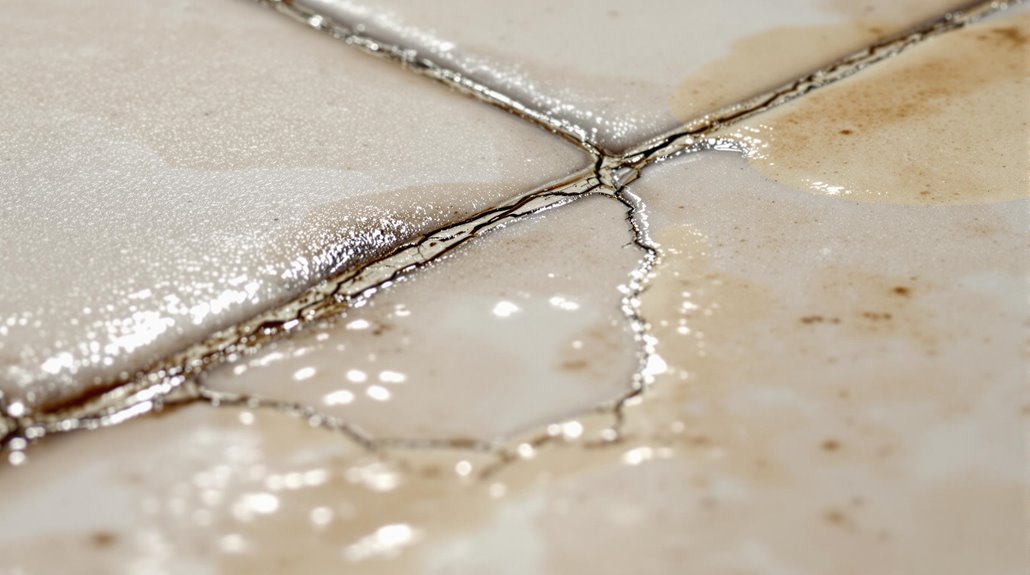
Several critical factors contribute to water seepage beneath tile installations, with faulty waterproofing systems and compromised grout integrity being primary culprits.
Poor waterproofing techniques during initial installation or deterioration of existing barriers can create pathways for moisture infiltration. Improperly installed shower pans and defective plumbing connections frequently lead to water accumulation beneath tiles.
Additional factors include damaged or deteriorating grout lines that fail to prevent water penetration, particularly in high-moisture areas like bathrooms and kitchens. Hollow sounds when tapping tiles often indicate underlying moisture issues requiring immediate attention.
Inadequate grout maintenance and failure to periodically reseal these areas accelerate the degradation process. External water infiltration can also impact tiles in bathrooms with exterior exposure.
These issues are often compounded by aging infrastructure, improper installation methods, and sustained exposure to moisture, necessitating regular inspection and maintenance to prevent extensive damage.
Preventing Future Water Damage to Tiled Surfaces
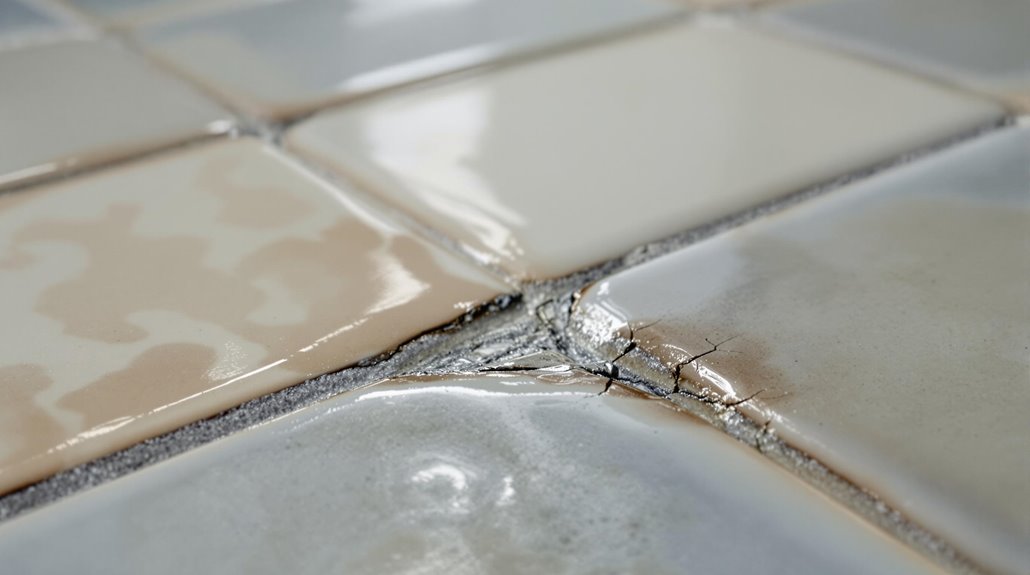
To effectively prevent water damage in tiled surfaces, property owners must implement a thorough protection strategy that combines proper installation techniques with regular maintenance protocols.
Critical preventive measures include installing waterproof membranes beneath tiles and applying tile adhesives uniformly to guarantee proper bonding. Installing tiles with 95% contact coverage ensures maximum protection against moisture infiltration.
Regular inspections should focus on identifying potential water intrusion points, particularly in grout lines and joints. Implementing a systematic maintenance schedule that includes sealing grout, testing plumbing fixtures, and promptly addressing water accumulation helps maintain the integrity of tiled surfaces.
Professional installation of high-quality, water-resistant materials greatly reduces the risk of water penetration. Additionally, upgrading bathroom fixtures, sealing joints with ASTM C920-compliant products, and conducting routine professional assessments contribute to an extensive water damage prevention system.
Professional Solutions for Water-Damaged Tile Floors
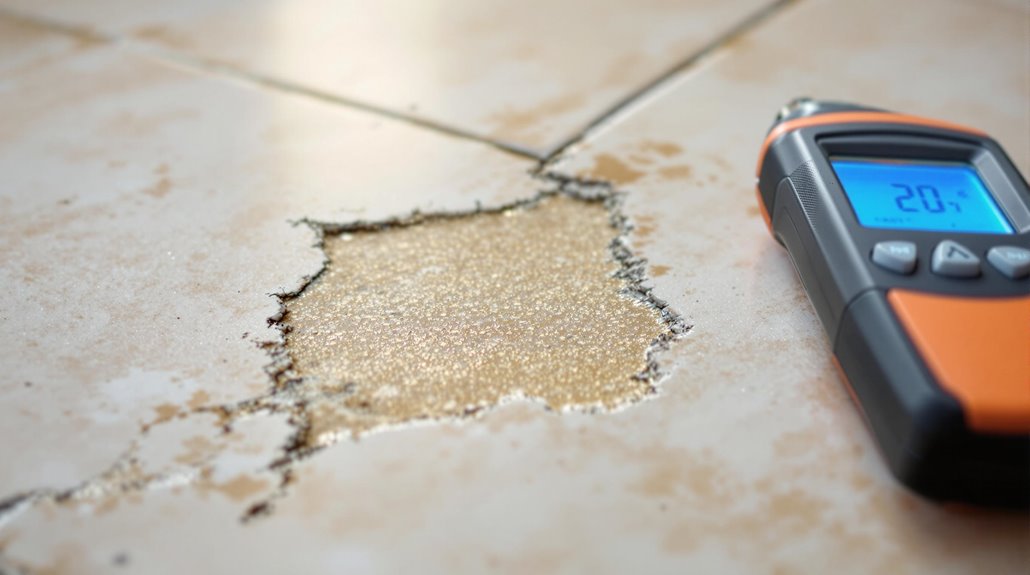
Professional intervention plays an essential role in addressing water-damaged tile floors through systematic assessment and restoration procedures.
Restoration specialists employ advanced moisture detection methods to evaluate subflooring conditions and determine damage extent beneath affected tiles.
The restoration process begins with careful removal of compromised tiles, followed by thorough subfloor inspection and necessary repairs.
Specialized equipment facilitates safe tile removal while preventing additional damage.
Professional tile restoration techniques include thorough drying procedures, antimicrobial treatments to prevent mold growth, and proper reinstallation of flooring materials. Additionally, using advanced tools and equipment ensures that moisture is effectively removed from surfaces. This often involves techniques for drying water under floor tiles, which is crucial for maintaining the integrity of the installation. Once the area is completely dry, skilled professionals can proceed with reapplying grout and sealants to enhance durability and appearance.
For severe cases involving structural issues, warping, or extensive moisture penetration, professionals implement complete restoration protocols, including subfloor replacement and proper sealing.
This systematic approach guarantees long-term stability and prevents recurring water damage issues in tiled surfaces.
Essential Maintenance Tips for Long-Lasting Tile Protection
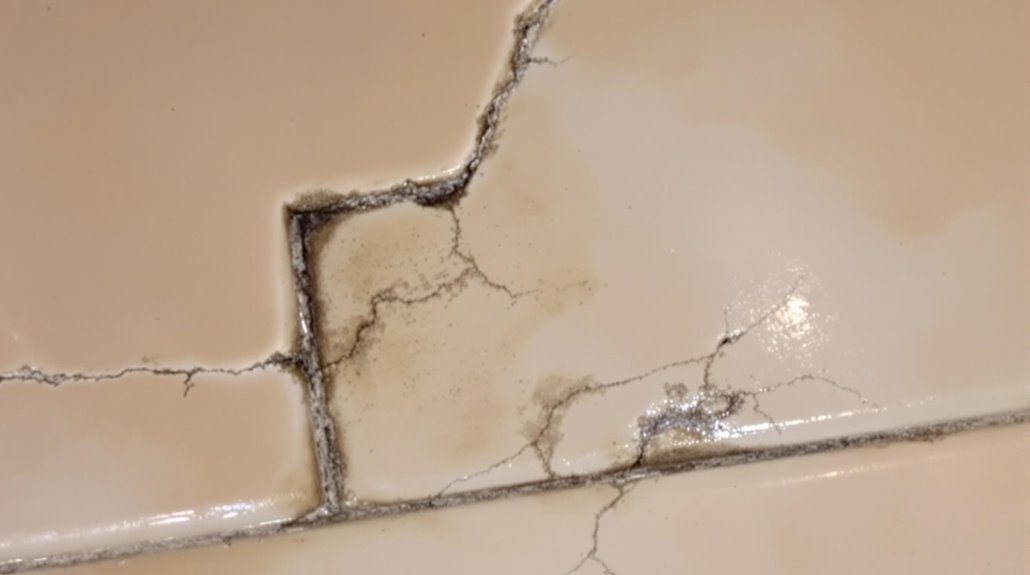
Maintaining tile floors requires a systematic approach to preventive care and regular maintenance schedules. Effective tile maintenance includes weekly vacuum or dust mopping to remove abrasive particles, coupled with gentle cleaning using mild soap solutions.
Monthly grout inspections and periodic deep cleaning target high-traffic areas where wear is most prevalent.
Grout sealing plays a critical role in preserving tile integrity, requiring reapplication every six months with silicone sealant. Protection strategies include utilizing area rugs in high-traffic zones, installing furniture pads, and implementing proper waterproofing measures.
To prevent damage, avoid harsh cleaning agents, metal scrubbers, and oil-based products. Instead, opt for soft brushes and tested cleaning solutions.
Regular inspection for water damage indicators, coupled with immediate remediation of deteriorated grout, guarantees long-term tile protection and structural integrity.
The Benefits Of Consulting A Public Adjuster
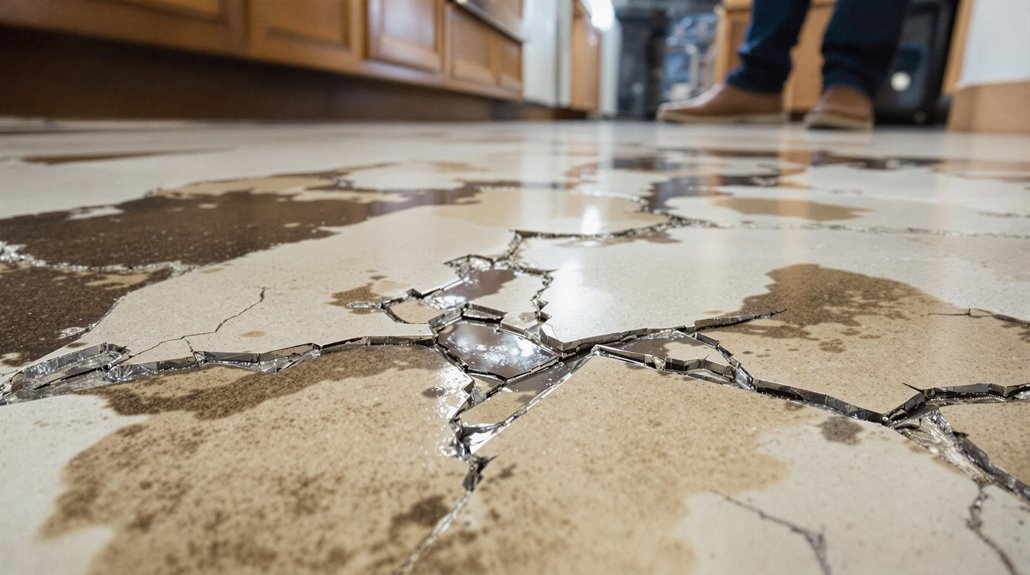
When faced with water damage beneath tile flooring, consulting a public adjuster provides essential expertise in maneuvering complex insurance claims and conducting thorough damage assessments.
Public adjusters streamline the claims process by managing all documentation, communications, and negotiations with insurance providers while protecting policyholder interests.
Their professional involvement often results in higher claim settlements due to their extensive understanding of coverage terms, detailed damage documentation, and skilled negotiation capabilities.
Studies show that working with licensed public adjusters can increase settlement amounts by up to 500% for non-catastrophic claims like water damage.
Expertise In Insurance Claims
Maneuvering insurance claims for water damage under tile requires specialized expertise that public adjusters can provide. Their in-depth knowledge of insurance policy interpretation and claims process navigation guarantees extensive coverage evaluation and accurate claim submissions.
Public adjusters possess thorough understanding of policy terms, conditions, and insurance regulations, enabling them to identify potential coverage gaps and maximize settlement outcomes. They meticulously document water damage evidence, prepare detailed repair estimates, and maintain extensive records to substantiate claims.
Their expertise extends to negotiating with insurance companies while advocating for policyholders' interests. Working on a contingency basis, public adjusters align their objectives with achieving ideal claim settlements.
This professional representation allows property owners to focus on restoration while guaranteeing their claims receive thorough, expert handling throughout the entire process. Unlike insurance adjusters who prioritize company interests, public adjusters can help identify hidden water damages that might otherwise go unnoticed during initial assessments.
Objective Damage Assessment
Public adjusters provide an impartial and systematic approach to evaluating water damage beneath tile surfaces. Using specialized equipment like moisture meters and thermal imaging technology, they detect hidden moisture and assess potential compromises to structural integrity.
Their extensive evaluation encompasses both visible and concealed damages, including subflooring deterioration and mold proliferation.
These professionals document all aspects of water damage meticulously, creating detailed reports that support insurance claims. Their expertise enables accurate identification of damage sources and thorough assessment of secondary effects.
Through systematic evaluation, public adjusters determine the full scope of necessary repairs and restoration work, ensuring that policyholders receive appropriate compensation for all documented damages.
Their objective assessment methods help prevent oversight of critical damage indicators that could lead to more extensive problems if left unaddressed.
With an average annual salary of claims adjuster earnings around $61,465, these professionals bring valuable expertise to complex water damage cases.
Streamlined Claim Process
Streamlining the insurance claims process represents a significant advantage of engaging public adjusters for water damage cases involving tile surfaces. Their expertise in claim efficiency and documentation management guarantees thorough handling of all aspects of the insurance claim, from initial filing to final settlement.
Public adjusters provide several key benefits that enhance the claims process:
- Professional management of all paperwork, photographs, and measurements related to tile water damage
- Expert negotiations with insurance companies to secure fair compensation
- Efficient navigation through complex policy requirements and regulatory compliance
- Time-saving coordination of documentation and communication with insurers
This systematic approach allows property owners to focus on restoration while maintaining confidence that their claim is being handled professionally and completely.
The adjuster's industry knowledge and experience facilitate faster claim resolution and superior settlement outcomes.
Operating on contingency fee basis, public adjusters typically charge between 5-20% of the final settlement amount, providing motivation to maximize claim payouts.
Higher Claim Payouts & Settlements
Engaging professional public adjusters for water-damaged tile claims consistently yields higher settlement amounts through detailed damage evaluation and skilled negotiation processes.
These experts utilize advanced diagnostic tools, including moisture meters and thermal imaging, to document both visible and concealed water damage beneath tile surfaces.
Public adjusters implement proven claim strategies that maximize compensation by thoroughly evaluating all damage components and presenting thorough documentation to insurance carriers.
Their expertise in settlement negotiation often results in considerably increased payouts, with documented cases showing settlement improvements of up to 50% compared to initial offers.
Through their detailed understanding of policy terms and industry standards, public adjusters effectively counter inadequate settlement proposals while ensuring all legitimate damages are properly valued and compensated according to policy provisions.
With typical fees ranging from 5% to 15% of the final settlement, public adjusters provide value through their proven ability to secure substantially higher compensation for water damage claims.
About The Public Claims Adjusters Network (PCAN)
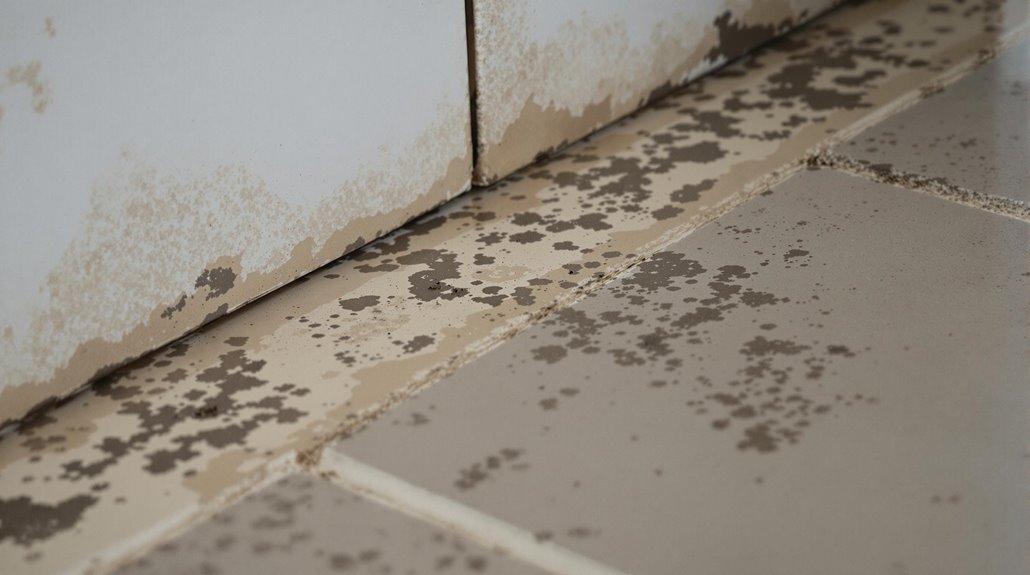
Professional insurance advocacy reaches new heights through the Public Claims Adjusters Network (PCAN), an established organization of licensed and bonded claims specialists.
PCAN delivers thorough claim management services without requiring upfront fees, operating on a contingency basis from successful settlements.
Key features of PCAN's service delivery include:
- Industry-leading software for accurate damage assessment
- Expert negotiation resulting in 300-400% higher settlements
- Continuous support throughout the claim process
- Strict adherence to insurance department regulations
Public Adjusters within the network maintain dual-role compliance, separating adjustment services from contracting work.
The organization emphasizes transparency through detailed documentation and estimates, while preserving policyholder rights regarding contractor selection.
This systematic approach guarantees maximum claim value while maintaining regulatory compliance.
Frequently Asked Questions
How Long Does It Take for Water Damage to Become Visible Under Tiles?
Like a hidden iceberg, water damage beneath tiles typically becomes visible within 48 hours to 2 weeks, with professional tile inspection methods revealing earlier signs through moisture detection equipment.
Can Water-Damaged Tiles Be Repaired Without Replacing the Entire Floor?
Localized tile restoration techniques can address minor water damage through targeted repairs. Advanced moisture detection methods determine salvageable areas, enabling partial repairs while maintaining structural integrity and code compliance.
What's the Average Cost to Repair Water Damage Under Bathroom Tiles?
Repair costs for water damage under bathroom tiles typically range $1,500-$2,000, varying by cost factors including damage severity, affected area size, and selected repair methods requiring professional restoration services.
Does Homeowner's Insurance Typically Cover Water Damage Under Tile Flooring?
Like a safety net beneath fragile tiles, homeowner's insurance typically covers sudden, accidental water damage under flooring, provided it's not from pre-existing conditions, poor installation, or maintenance neglect.
How Often Should Tile and Grout Be Professionally Inspected for Water Damage?
Professional tile maintenance and grout care inspections should be conducted annually, with high-moisture areas requiring bi-annual assessments. More frequent evaluations are recommended for spaces experiencing heavy water exposure.
References
- https://www.1tomplumber.com/signs-water-damage-under-tile/
- https://www.jonathansflooring.com/blog/can-my-tile-flooring-get-water-damaged
- https://www.riversiderestore.com/restoration-tips/do-you-need-to-remove-tile-flooring-after-water-damage
- https://curlyscarpetrepair.com/signs-of-water-damage-in-your-floor-tiles/
- https://rainbowrestores.com/blog/can-water-damage-tile-floors
- https://www.ctr-nw.com/blog/water-damage-under-tile/
- https://rainbowrestores.com/blog/what-does-water-damage-look-like
- https://www.puroclean.com/plymouth-meeting-pa/blog/water-damage-tile-floors/
- https://ready5.us/what-does-water-damage-look-like-early-signs-of-water-damage/
- https://www.thegroutguy.com.au/blog-posts/how-to-spot-water-damage-underneath-your-shower-tiles/


